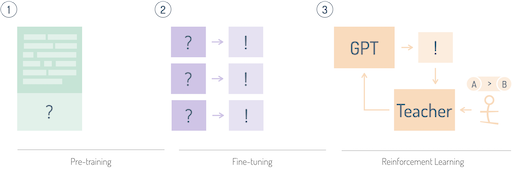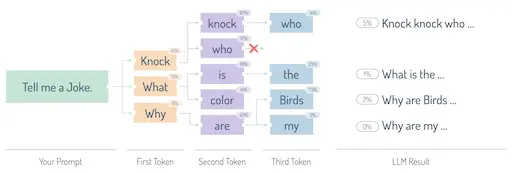Unlocking the Power of Generative AI:
A Simple Guide for Business Owners and CTOs
Generative AI changes the way how businesses work. It helps with everyday tasks like creating content, summarizing information, and even making decisions. But what is Generative Artificial Intelligence? Let’s break it down and learn how it can benefit your business.
Generative AI Explained
Generative AI is a field of artificial intelligence that generates new things, like text, images, and other types of content. It learns from large amounts of data, then uses what it has learned to generate something new. Instead of following strict rules, it recognizes patterns and applies them in creative ways.
This technology can be useful in many different areas, helping your business save time and resources.
How Does Generative AI Work?
Technically, Generative AI is powered by Large Language Models, introduced by Google in 2017. Think of an LLM as a box that predicts what comes next in a sentence. For example, if you ask it to “Write a product description,” the model looks at all the possible words and chooses the one that fits best. So, it might pick the word “innovative” and add it to your prompt, turning it into “Write a product description. Innovative.” The model keeps going like this, word by word, until it reaches a special “end of sentence” marker.
Understanding Transformers: The Brain of Generative AI
Transformers are the backbone of large language models (LLMs). They help the model grasp the meaning behind your words by looking at the whole prompt at once.
One important feature of transformers is something called attention heads. Each attention head zooms in on different parts of the text, figuring out how words relate to one another. This is crucial because every word in your prompt or the output affects the words that come next. That’s why crafting your input carefully—known as prompt engineering—is so important. Using the right words can really change how well the AI responds.
If you want to make your prompts better, you can try our free ChatGPT Prompt Optimizer to enhance them automatically.
The Training Process: How LLMs Learn
Training a model like GPT happens in three main steps:
- Pre-training: First, the model reads a huge amount of text from the internet. It learns by trying to guess the next word in a sentence. The more it practices, the better it gets at predicting.
- Fine-tuning: Next, the model gets special training with specific prompts. For example, it might be told to “Write a marketing email” or “Summarize this report.” This helps the model understand how to follow clear instructions.
- Reinforcement Learning: Finally, the model learns from user feedback. When you rate a response or pick the best one from several options, that information helps train a “teacher” model. This teacher model checks the quality of each answer the original model generates. In fact, one AI is training another AI here. This setup lets the system improve over time.

This process is known as “Human in the Loop,” and many experts see it as the true revolution in modern AI. It helps the AI keep getting better because giving feedback as a human is much easier than trying to give it perfect examples of how to fulfill prompts.
Making Predictions: How the Model Generates Responses
When you give a prompt to an AI like GPT, it uses a method called auto-regressive generation. This means it predicts each word one at a time, building on what came before.
To make sure the responses are varied and accurate, the model uses techniques like beam search. This allows it to consider multiple possible answers at the same time.
The temperature setting plays a big role in this process. With a low temperature, the model tends to choose the most common or predictable words. This results in more straightforward and accurate responses. On the other hand, a higher temperature means the model might pick less obvious words, sometimes going for the second or third-best choice. This can lead to more creative and interesting outputs. In this way, the randomness adds a spark of creativity to the responses.

Why It Matters for Your Business
Generative AI can really help your business in practical ways. It can automate tasks like customer support and create engaging marketing content. It can even assist in designing new products. Therefore, it saves time and reduces costs, opening up new possibilities for growth.
Getting to know Generative AI and how it works can help you use it effectively. It’s not just about understanding the technology. It’s about figuring out how to apply it to improve your business.
And that's the real added value behind generative AI.
